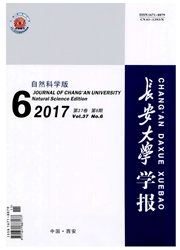

 中文摘要:
中文摘要:
以历史城区为研究对象,结合扬州市通勤者出行调查数据,采用结构方程模型(SEM),对通勤者活动和出行相关特征进行建模分析。按照居住地和工作地所处区域的差异,将通勤者分为3类,以通勤者的个体特征和家庭特征作为外生变量,以活动强度和出行特征作为内生变量,分别对3类通勤者的结构方程模型进行了参数估计,并对估计结果进行了灵敏度分析。研究结果表明:通勤者职住分布特征的差异导致了活动特征的差异,进一步造成出行特征的差异;居住地和工作地所在区位的差异,对通勤者活动特征和出行特征具有较强的影响作用,而出行者个体和家庭属性的影响相对要小很多;历史城区由于功能的混合性和公共服务相对完善,其活动特征和出行特征相对其他区域复杂和多样,对区外居住者也有较大的吸引力。研究对完善历史城区交通政策制定具有很好的指导意义。
 英文摘要:
英文摘要:
Taking historic urban area as study object,this paper developed structural equation model(SEM)to analyze commuters' activity and trip characteristics in Yangzhou.In SEM,commuters' individual and family features are exogenous variables,and activity intensity and trip characteristics are endogenous variables.According to the differences between place of residence and work place,commuters were divided into three classes.The SEMs of the three kinds of commuters were estimated respectively,and the sensitivity analysis was carried out according to the estimates.The results show that commuters' choices on activities and trips are deeply influenced by the relative position relations between residence place and workplace.Commuters' individual and family features have little impacts on their choices on activities and trips.Activities and trips are more complex in historic urban area than other areas in the city,as historic urban area have mixed functions and better public service allocation.It is believed that the careful study on commuters' activities and trips do have guiding significance for transport policy making in historic urban area.
 同期刊论文项目
同期刊论文项目
 同项目期刊论文
同项目期刊论文
 期刊信息
期刊信息
